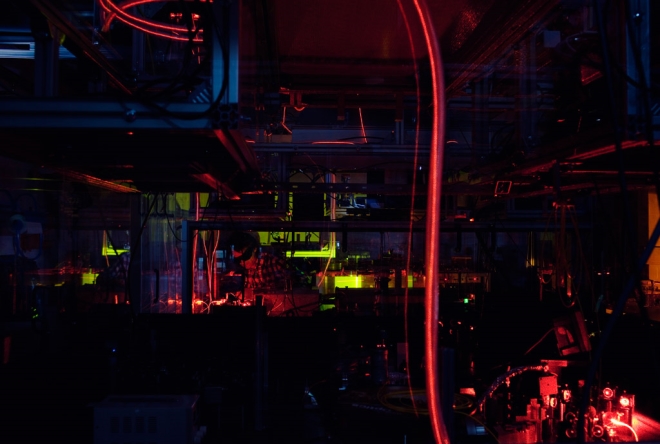August 01, 2013
Physicists in Darmstadt have been able to stop something that has the greatest possible speed and that never really stops: light. The physicists, headed by Thomas Halfmann, stopped light for about one minute. They were also able to save images that were transferred by the light pulse into the crystal for a minute – a million times longer than previously possible.
Already a decade ago, physicists stopped light for a very short moment: In previous years, this extended towards stop times of a few seconds for simple light pulses in extremely cold gases and special crystals.
But now the researchers at the Institute of Applied Physics of the Technische Universität Darmstadt extended the possible duration and applications for freezing the motion of light considerably.
The researchers achieved the record by cleverly combining various known methods of their field. The result will have practical significance in future data processing systems that operate using light.
A glass-like crystal to stop the light
To stop the light, the physicists used a glass-like crystal that contains a low concentration of ions – electrically charged atoms – of the element praseodymium. The experimental setup also includes two laser beams. One is part of the deceleration unit, while the other is to be stopped.
The first light beam, called the “control beam”, changes the optical properties of the crystal: the ions then change the speed of light to a high degree. The second beam, the one to be stopped, now comes into contact with this new medium of crystal and laser light and is slowed down within it. When the physicists switch off the control beam at the same moment that the other beam is within the crystal, the decelerated beam comes to a stop.
More precisely, the light turns into a kind of wave trapped in the crystal lattice. This can be explained in greatly simplified form as follows. The praseodymium ions are orbited by electrons. These behave similarly to a chain of magnets: if you put one into motion, the movement – mediated by magnetic forces – propagates in the chain like a wave.
Storing a striped pattern
Since physicists call the magnetism of electrons “spin”, a “spin wave” forms in the same manner when freezing the laser beam. This is a reflection of the laser’s light wave. In this way, the Darmstadt researchers were able to store images, such as a striped pattern, made of laser light within the crystal. The information can be read out again by turning the control laser beam on again.
The fact that only very short storage times were possible until now is because perturbing environments interfered with the spin wave, similar to how moving ships mix up waves in a lake. The information about the stored light wave is thus gradually lost. The perturbations can be alleviated by applying magnetic fields and high-frequency pulses. In our example, these fields reduce the number of boats on the lake, as it were.
Only the beginning
How well this works depends strongly on the parameters of the driving optical fields, magnetic fields and the high-frequency pulses. There are very many variations, and the optimal setting can hardly be calculated because of the complexity. Therefore, the Darmstadt researchers used computer algorithms that quickly and entirely automatically find the best solutions during the experiment.
One of the algorithms is based on natural evolution, which produces organisms that are adapted as well as possible to the environment. Using the algorithms, the researchers were able to optimize the laser beams, the magnetic field and the high-frequency pulses in such a manner that the spin waves survived nearly as long as is possible in the crystal.
Based on this success, Halfmann’s team now intends to explore techniques that can store light significantly longer – perhaps for a week – and to achieve a higher bandwidth and data transfer rate for efficient information storage by stopped light.
Christian Meier















